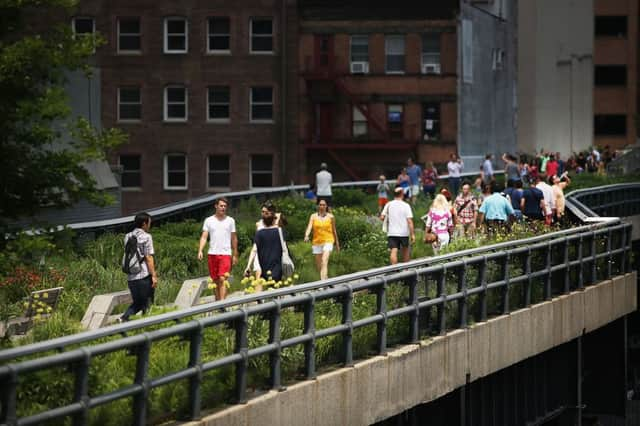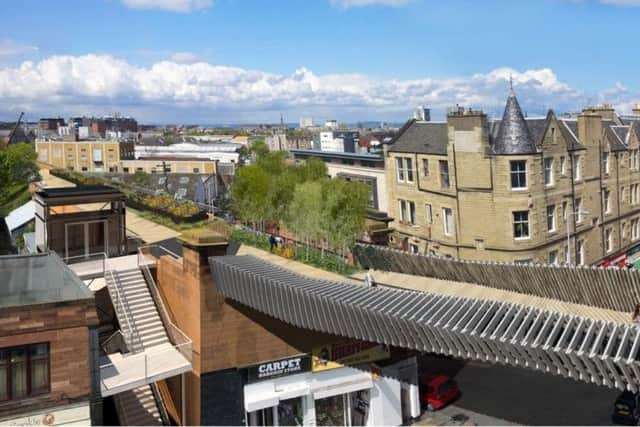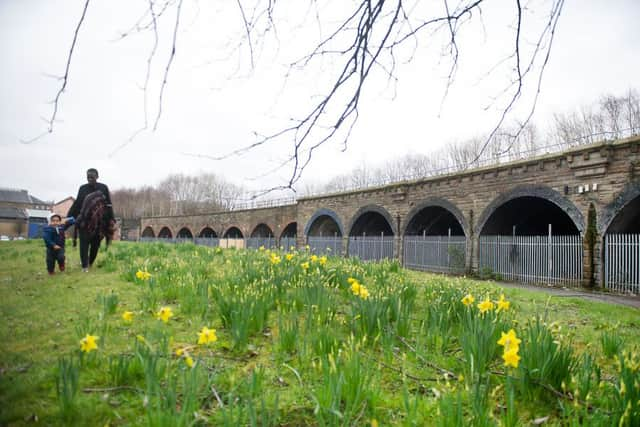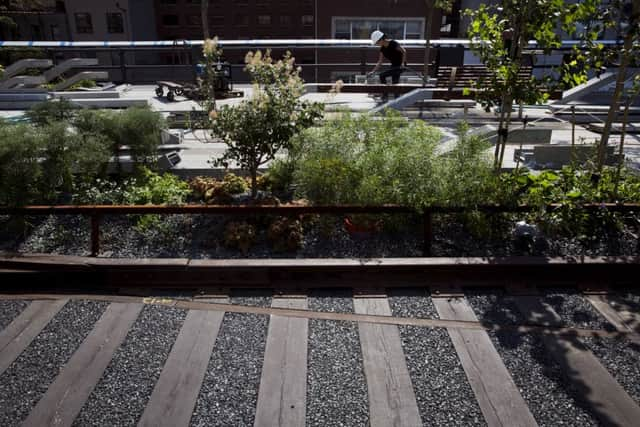Could Edinburgh or Glasgow open a High Line like New York?


But an elevated freight railway in lower west Manhattan is now one of the city’s most popular free tourist attractions.
A 1.45 mile stretch was converted in 2009 to become the High Line, a linear park which allows visitors to stroll through a landscaped garden far above the traffic below.
Advertisement
Hide AdAdvertisement
Hide AdThe attraction was partly inspired by the Promenade Plantée in Paris, which opened in 1993 on the route of an abandoned suburban railway.


New York’s High Line now attracts five million visitors per year and several extensions are already planned.
Its success has led campaigners in Scotland to look at possible locations for a similar urban project.
“Railways offer unique views of cities that you wouldn’t normally see,” said Charlie Cumming, chief executive of Edinburgh and Lothian Greenspace Trust (ELGT).
“And they make great places for cycling and walking as they are generally flat and away from traffic.


“A lot of people can also walk along them - there’s room for more walkers than cyclists.
“We did look at the example of the New York High Line and how it can help regenerate a local area.”
ELGT is responsible for plans to build a new bridge across Leith Walk in Edinburgh to create an elevated cycle path.
Advertisement
Hide AdAdvertisement
Hide AdIt would replace the Manderston Street railway bridge removed in 1980 and link two sections of viaduct that once served Leith Central station, which has long since been demolished.


The group said it would complete “a missing link” in the city’s cycle network as well as becoming a tourist attraction in its own right.
The idea to use the railway as the basis for a new linear park was first mooted by Leith-based architect Pierre Forrisier, who was inspired by the Promenade Plantée in his home city of Paris.
Yet the plans remain in the sidings for now due to costs at a time when local authorities are facing sharp budget cuts.
ELGT submitted a detailed feasibility study to City of Edinburgh Council last year which estimated the bridge and associated works would cost £4.8m.


“The plan is still being actively promoted in the local community,” said Cumming. “Everyone agrees it’s a great idea. There would be benefits of economic regeneration as well as transport connections.
“Linear parks are unusual and attract visitors, as the High Line shows.
“But the costs are significant and it would require either an agreement to be reached or compulsory purchase for some of the land.”
Advertisement
Hide AdAdvertisement
Hide AdGlasgow, like Edinburgh, also has several disused elevated railways.
An online campaign has attempted in recent years to create interest in opening a closed section of track in the Gorbals as a high line-style park, but has so far failed to attract interest from public authorities.
One section of viaduct, near to Alexander Thomson’s Grade A-listed Caledonia Road church, is filled with mature trees and shrubbery.


Although there is no public access to the site, numerous pictures have been posted on social media in recent years from those who managed to gain entry.
Future rail developments are likely to rule the site out as a potential high line park, however.
The Glasgow Crossrail project, which has been discussed for more than 25 years, would pass through the Gorbals if it ever makes it off the drawing board.
Other elevated sections of former railway have already opened to the public.
A cycle route from Whiteinch, in the west end of Glasgow, to Clydebank, follows the route of the former Lanarkshire and Dunbartonshire Railway.
Advertisement
Hide AdAdvertisement
Hide AdBut it lacks the central location which attracts visitors and encourages commuters to leave their cars at home.
Green councillor Martha Wardrop said it was important cities such as Glasgow continued to explore innovative ways to create cycle and walking routes through urban areas and encourage people to be less reliant on their cars.
“There is an understanding that we need more dedicated routes,” she said. “We need to encourage people to get outdoors more and be physically active.”